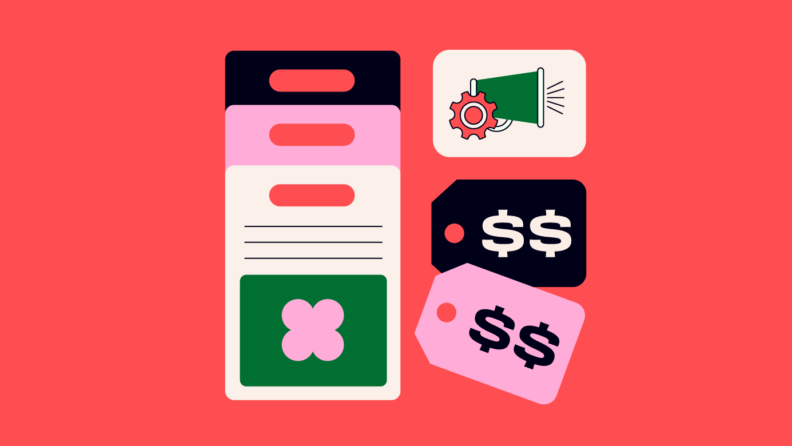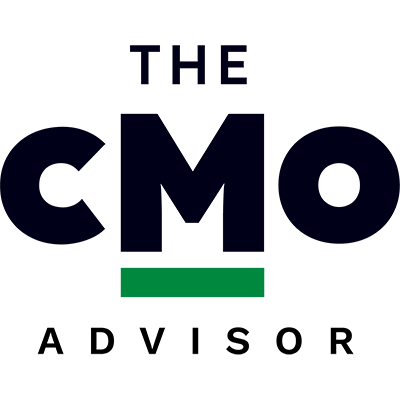The challenge for many businesses is not deciding whether to invest in marketing automation software, but figuring out how to do so economically. With initial setup costs ranging from a reasonable $2,000 to a substantial $10,000 and monthly fees that could be anywhere from $200 to $2,000, the stakes are high. It’s a landscape where the number of features, level of support, and even the choice between a third-party platform or agency can tip the scales of your marketing budget.
Given these factors, I suggest carefully examining at least ten different marketing automation services before settling on one. The goal is to strike a balance between a realistic budget that won’t strain your finances and the functionalities that will truly benefit your marketing efforts. And with the option of free trials, there’s no reason not to test drive your top picks.
In this article, I'll share everything you need to know to get started when exploring marketing software pricing, plus tips for chatting with providers and how you can actually negotiate their best marketing automation software offers.
Costs: Marketing automation platform costs vary widely, with initial setup fees typically ranging from $2,000 to $10,000 and monthly fees from $200 to over $2,000, emphasizing the need to balance budget with desired functionalities.
Models: A detailed understanding of subscription models, potential hidden costs, and the custom features required for effective marketing is vital before you make an investment.
Negotiation: Negotiation strategies, including leveraging competing offers and focusing on essential features, can secure more favorable pricing and terms when selecting a marketing automation vendor.
Understanding Marketing Automation Software Cost
There are many layers to marketing automation software costs influenced by a spectrum of elements. Service features, functionality, support, and the subscription model chosen can all tweak the final invoice. It’s a financial kaleidoscope, with options ranging from:
- Free
- $10 - $100 per month
- $100 - $500 per month
- $500 - $1000 per month
- $1000 - $2000 per month
- Over $2000 per month
This means anyone from lean startups to sprawling enterprises can find a solution tailored to their marketing campaigns, team size, and, arguably most crucially, their wallet. Familiarizing yourself with the cost of automation software is the first step you need to take.
From there, it's all about which is the best fit for you. Whether it’s streamlining marketing tasks, orchestrating email marketing campaigns, or engaging potential customers through SMS marketing, the right automation platform has the potential to transform your marketing team’s efficiency, so you want ensure you make the right choice.
Subscription models explained
Most digital marketing automation platforms have similar subscription models. Here's what you should know at a glance:
- Most platforms favor a recurring revenue structure
- Plans are most commonly billed per month or annually
- Plans are crafted to cater to various user counts, feature sets, and billing frequencies
- It’s a sliding scale where the number of users and the richness of the feature set dictate the ascent or descent of monthly costs.
Pro tip: Consider the savings potential of annual over monthly billing or the tiered pricing structure of platforms like Omnisend, which starts with a free option and climbs to $59 per month for its pro plan. The pricing model becomes a strategic choice, influencing not only immediate cash flow but also the long-term financial commitment to marketing automation.
Is Marketing Automation Software Worth The Price?
Yes, I've found that marketing automation software is absolutely worth the price. With an impressive average return on investment of $5.44 for every dollar spent over the first three years, the money should appear right back in your wallet.
The software’s impact on audience targeting and lead quality alone could justify the investment, not to mention the statistical likelihood of recouping initial costs in under six months. The vast majority of marketers will echo this sentiment, but if you want to see for yourself, watch for early indicators of a worthwhile investment like:
- An uptick in revenue within mere months of implementation
- Increased customer engagement and satisfaction
- Improved lead generation and conversion rates
- Streamlined marketing processes and increased efficiency
- Enhanced customer segmentation and personalization
- Higher ROI on marketing campaigns
The key is to align the marketing automation plan with the company’s broader marketing strategies, ensuring that every dollar spent on automation contributes to the overarching goal of business growth. It also helps to follow marketing automation best practices to get the most bang for your buck.
Hidden Costs In Marketing Automation Pricing

While I've reasoned why I think marketing automation is worth the price, it's important to note that the listed price is merely the starting point. Hidden costs like onboarding, setup fees, and ongoing training and support services can inflate the total spend, often catching businesses off guard. These are the considerations that can make or break the budget, especially when choosing between in-house management or agency services.
Setup fees and onboarding
The journey with any new marketing software begins with onboarding, a critical phase that encompasses everything from installation and configuration to data import and training. The onboarding package may also include setting up reports and dashboards, as well as regular check-ins to ensure everything is running smoothly. Often, this process is designed to be completed within a set timeframe, such as four weeks from the start date, to ensure a quick transition to the new system.
The costs associated with this phase can vary greatly depending on the level of support provided. Some companies might offer unlimited access to online training webinars, while others might provide live training sessions, all aiming to ensure that your team can fully utilize the platform’s features from day one.
Training and support services
Beyond the initial setup, training and support services are ongoing expenses that can add up over time. Different levels of support are available, from basic to premier, and the cost can escalate if you opt for premium options like priority support or a dedicated customer service manager. The level of support chosen will often reflect the complexity of the marketing activities and the expertise of the marketing team in using automation tools.
If you want to ensure every marketing team member is fully supported, I do think investing in ongoing training can be well worth the cost. It’s a decision that can lead to better utilization of the software, fewer errors, and higher productivity in the long run.
Custom feature development
Custom feature development—like using AI in marketing automation—is often dictated by the complexity of the marketing campaigns you want to run. The more intricate and customized the campaigns, the higher the costs associated with developing these unique features. It’s not just about creating new functionalities; it’s about ensuring that these features directly address the high-impact tasks that bring substantial value to your organization.
You might consider the additional services that come with custom development, such as the creation of tailored training materials or the provision of a dedicated senior project manager. These specialized services enhance the value of custom features and should be factored into the overall cost analysis.
CRM and third-party integrations
Integrating marketing automation tools with CRM systems and other applications can be a game-changer if you're looking to optimize return on investment. These integrations can streamline data flow, enhance personalization, and support your team’s efforts to nurture leads effectively. While smaller businesses might find integrated CRM systems a cost-effective solution, larger organizations may require more sophisticated integrations, which come with higher implementation costs.
Third-party integrations, often facilitated via an API, can save time and reduce errors, but they also require an investment to set up and maintain. During negotiations, it’s wise to emphasize the importance of CRM integration capabilities, as they can help optimize marketing efforts and potentially improve pricing options by effectively utilizing customer data. More on negotiating coming up!
Scaling Up: When To Expand Your Marketing Automation Platform
As your business expands and your initiatives become more sophisticated, you'll inevitably need to scale up your marketing automation platform. Identifying the appropriate moment to do this is important, as it involves not just a financial investment but also a strategic decision about the direction of the company’s marketing strategies. Here's are the signs you should look for:
- You notice a plateau in marketing campaign effectiveness
- Your current processes no longer align with the evolving customer journey
- You experience growth in the form of business expansion, an increase in user base, or a scale-up in contact or lead interactions
- You require more complex strategies to handle growth, such as lead scoring, dynamic content creation, and comprehensive marketing reporting
Scaling your tools comes with its own set of cost considerations, such as ongoing maintenance expenses and the price that comes with more advanced systems and features. The decision to scale should therefore be made with both the immediate and future costs in mind—it’s a balancing act between the need for more advanced capabilities and the financial feasibility of the investment.
The Best Marketing Automation Software
So, with all this in mind, it begs one simple question: which marketing automation software vendors should you take a look at first? I’ve put together a list of vetted favorites by best use case, plus a ton of advice on how to choose marketing automation software in another post.
Tips For Negotiating Marketing Automation Software Pricing
I have a few tricks up my sleeve for when it comes to engaging in negotiations with marketing automation software vendors. Here are some that have worked for me time and time again:
- Leverage the competition by presenting offers from competing vendors; this can be a powerful negotiation tool to encourage each vendor to put their best foot forward.
- Contract flexibility is also a crucial aspect; understand the ability to upgrade or downgrade services and any associated penalties.
- Position your company as a growing entity, emphasizing the potential long-term value you bring to the vendor.
Expressing concerns about long-term commitments can serve as leverage to secure more advantageous pricing or terms. It’s also beneficial to clearly define which features of the marketing automation platform are essential to your marketing efforts and which you could do without, as this can help reduce costs. Negotiation is an art, and when applied with finesse, it can lead to substantial savings for your organization.
Join For More Automation Insights
Well, we've talked a lot about money. As a quick recap, marketing automation software investments range from a few thousand to tens of thousands of dollars annually. Factors like the complexity of implementation, level of support, consulting services, features, number of contacts, and the choice of agency or in-house management all play a role in shaping the cost.
Trying out different options through free trials should be your first step, and once you've narrowed it down to the one you like best, get those savvy negotiation skills ready.
If you enjoyed reading this article and found it useful in your hunt for the best bargain, make sure you subscribe to The CMO newsletter. We'll send all the best tips and insights straight to your inbox.
Frequently Asked Questions
What initial setup costs can I expect for marketing automation?
Initial setup costs for marketing automation services can range from $2,000 to $10,000, covering setup activities and staff training. These costs depend on the specific requirements of your business.
How does the number of contacts affect marketing automation pricing?
The number of contacts has a direct impact on marketing automation software pricing, as larger contact lists typically result in higher costs. It’s important to consider the size of your contact database when evaluating pricing for marketing automation services.
Can I negotiate the pricing of marketing automation software?
Yes, you can negotiate the pricing of marketing automation software by leveraging competing vendor quotes, discussing contract flexibility, emphasizing potential growth, and focusing on essential features.
Are there hidden costs I should be aware of when considering marketing automation?
Yes, there are several hidden costs to consider when implementing marketing automation, such as onboarding, setup fees, training, support services, and custom features or integrations. Be sure to account for all potential expenses.
When should I consider scaling up my marketing automation tools?
Consider scaling up your marketing automation tools when your business experiences growth that demands more complex strategies or when you observe a plateau in marketing campaign effectiveness. This could indicate the need for advanced lead scoring or dynamic content creation.



